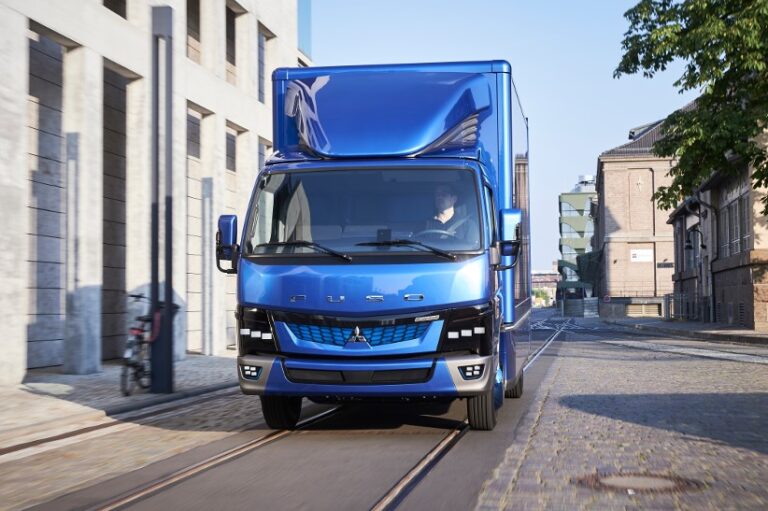The revolutionary all-electric Fuso eCanter is coming to Australia next year. Fuso revealed the third generation of the world’s first all-electric light duty truck at the IAA Commercial Vehicles Show in Hannover last week.
An enhanced version of the Fuso Canter E-Cell electric truck that has already proven itself in real-world trials in Portugal in Germany, the eCanter features an upgraded drive system and a striking new design.
Fuso Truck and Bus director, Justin Whitford, confirmed the eCanter will be involved in a trial with key customer fleets next year.
This will be a key component in the Fuso product range expansion plan and will be joined in-market by a number of new products under full test environment.
“We are excited to be able to conduct a local trial with the groundbreaking all-electric Fuso eCanter in Australia,” Whitford says.
A small series production run of the eCanter revealed in Germany will be delivered to Fuso customers in Europe, the US and Japan next year.
The new eCanter uses a permanent synchronous electric motor with an impressive output of 185 kW and torque of 380 Nm. Power is transferred to the rear axle by a standard single-speed transmission.
The vehicle being premiered at the IAA features a battery capacity of 70 kWh. Depending on the body, load and also usage, a range of more than 100 km without stationary recharging is possible. The batteries are spread over five units, one centrally in the frame right behind the cab and two more on each side of the frame.
They are water-cooled lithium-ion batteries that feature a long service life, high efficiency, especially at high ambient temperatures, and also compact design of the battery units. Despite the weight of the battery pack, the Fuso eCanter nevertheless boasts an outstanding weight balance: the chassis load capacity of the 7.5-tonne vehicle is 4.63 t including the body and load.
Individual battery packs with three to six sets of batteries of 14 kWh each are planned for the upcoming small-scale production run. This allows the eCanter to be adapted to customer requirements with regards to range, price and weight.
The concept is based on the experience that for some operators, payload is more important than range, while others are happy to sacrifice payload for longer range, i.e. more battery packs. Equally adaptable are the charging options: up to 80 percent capacity within an hour with direct current at a quick charging station, or 100 percent in seven hours with alternating current.
In future, rapid charging will allow for charging of 80 percent battery capacity in just half and hour. A standard Combo 2 plug (known as Combined Charging System) is used for charging.
The exhibition vehicle features a unique and attractive design, with LED headlamps and also a distinct grille and bumper, and a redesigned interior including a central, removable tablet.
The wide comfort cab is painted in metallic blue, while the fully-clad sides are finished in anthracite grey with a blue LED strip. A walk-on glass floor in the exhibition vehicle’s box body offers a view of the drive unit and the batteries.
The Fuso eCanter’s locally zero-emission drive will not only reduce the impact of exhaust and noise emissions on city centres, but will also be an economically attractive alternative to diesel engines.
Thanks to lower technology costs, the eCanter can be offered at a competitive price at market launch. Lower running costs compared with an equivalent diesel model mean that any additional expense can be repaid in around three years.
The results of a year-long fleet test with the second generation of the Fuso Canter E-Cell have shown that around €1000 per 10 000 km can be saved with this vehicle compared with a diesel version.
Coupled with maintenance costs which are around 30 percent lower, this makes the Fuso an economical solution for customers. These vehicles have proven their suitability for daily use in short-radius distribution and urban transport.
The eCanter joins the diesel-electric Canter Eco Hybrid in the Fuso portfolio. Series manufacture of the Canter Eco Hybrid began in 2006, while the second generation has been in production since 2012.
Fuso presented the first generation of the electrically powered Canter E-Cell at the IAA 2010, with the second generation following in 2014. The all-electric Fuso eCanter celebrating its world premiere at the IAA this year marks the third generation of the vehicle.






